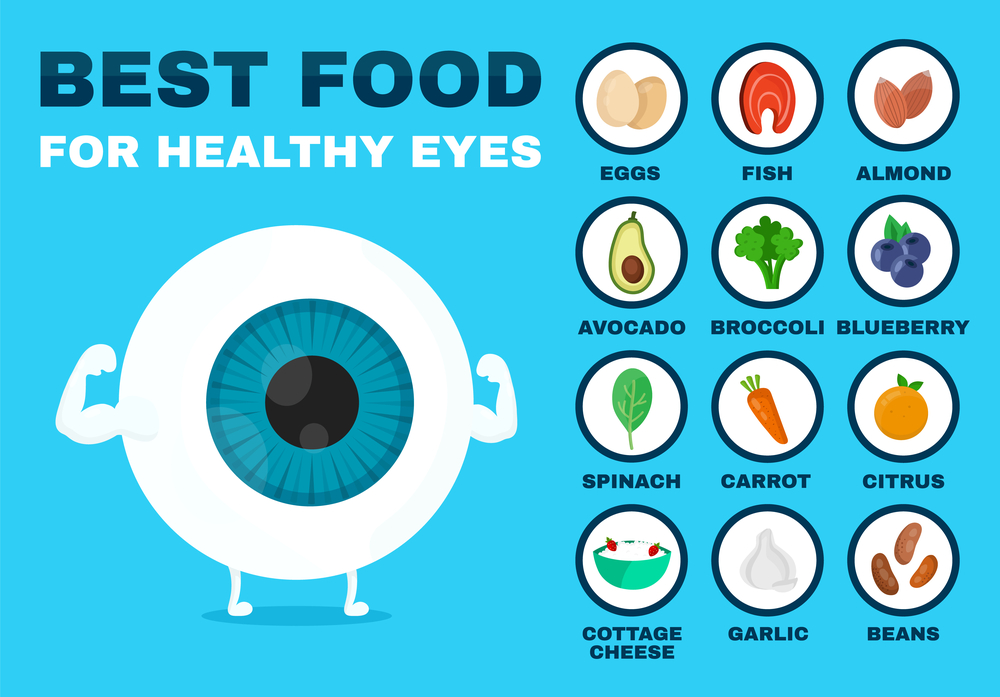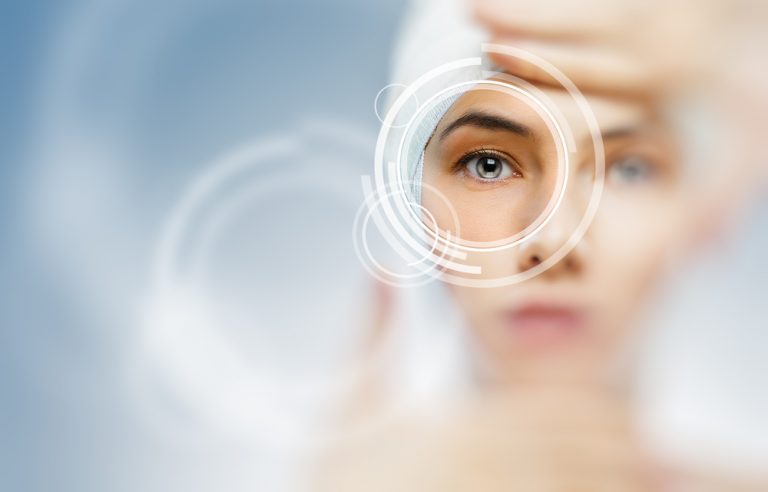Our eyes are our windows to the world. Unless you are suffering from an eye disorder then you probably don’t think about them much, but they are amazing when you think about what we can see. Our eyes allow us to see objects in colour, close to us, or far away. Even at night we are able to see to a limited extent. Our eyes though can suffer from various disorders throughout our life, and some people are born with disorders of the eyes. In this blog I will mention some of the common disorders of the eyes and what we can do with regard to our diet to support the healthy condition of our eyes.
Common disorders of the eyes
Some people are born with eye disorders and in some cases little can be done to correct these types of congenital conditions, and those who suffer from them will be under medical supervision. It could be argued that the more common treatable eye conditions tend to occur more often as we age.
Dry eyes
Dry eyes can effect anyone and can cause some discomfort. It could be argued that if you are looking at a screen for most of the day then this can cause eye strain and you may not blink as much causing your eyes to feel dry. You can also suffer from dry eyes if you wear contact lenses for long periods of time without having a break from them. Usually resting your eyes by closing them and maybe applying a warm eye mask will sort out the problem, or using eye drops especially developed for dry eyes will help

Eye infections
Eye infections it could be argued, are largely caused by bacteria getting into the eye and causing the infection. This can be done by rubbing the eyes with dirty hands, which makes it very important to always wash and dry hands thoroughly before touching the eyes. Eye infections can usually be treated with over the counter medication or a visit to the GP.
Glaucoma
Glaucoma is a condition where the optic nerve becomes damaged, usually caused by a build-up of fluid in the font part of the eye, which increases pressure inside the eye (NHS, 2018). It can affect people of all ages, but is more common in the elderly, and if left untreated can lead to loss of vision. Glaucoma can develop for a number of reasons, diabetes being one. Any damage already caused when glaucoma is diagnosed cannot be reversed, but treatment including surgery can help reduce pressure and stop vision from deteriorating further.
Age-related macular degeneration (AMD)
According to the Macular Society (2017), the causes of AMD are not fully understood, but it is believed factors responsible include; age, genetics, smoking, exposure to sunlight and diet. Almost 1.5 M people in the UK have macular disease, and AMD is the biggest cause of sight loss in the UK effecting more than 600,000 people.
The macula is part of the retina at the back of the eye, it is responsible for all of our central vision and all of our colour vision and how we see fine detail. It contains a very high percentage of our photoreceptor cells. It is these photoreceptor cells that we have to try to keep healthy by avoiding an unhealthy lifestyle. We cannot change our genetics of course, but we can influence our diet and lifestyle, such as giving up smoking, protecting our eyes from bright sunlight and taking exercise.
There are two different types of AMD – wet and dry. Wet AMD develops when abnormal blood vessels grow into the macula. Dry AMD develops slowly and the cells of the macula degenerate. Wet AMD is usually treated with injections into the eye to stop the growth of the abnormal blood vessels. There is currently no treatment for dry AMD, and most people who have dry AMD tend to progress to wet AMD (Macular Society, 2017)
Diabetic retinopathy
Diabetic retinopathy is a disorder that people living with diabetes are at risk of developing. Constantly high blood sugar levels and blood pressure can damage the blood vessels in the eye. As the retina is richly supplied with blood vessels, damage to these can cause sight problems (Diabetes UK, 2020).
Cataracts
Cataracts are when the lens in the eye develops cloudy patches (NHS, 2017). They are most common in the elderly and can usually be corrected via surgery. There are potentially different causes for cataracts, including smoking, drinking too much alcohol and diabetes.
How foods and nutrients promote healthy eyes
It could be argued that a healthy diet can play a role in preventing or limiting the development of AMD, diabetic retinopathy and cataracts amongst other health considerations such as exercise, not smoking and drinking too much alcohol. Type II diabetes can be largely caused by an unhealthy diet high in sugar. It is necessary to control blood sugar levels when suffering from either type I or type II diabetes. In the case of type II diabetes following a diet that is low in sugar, cakes, biscuits, refined carbohydrates such as white bread, pasta and rice, and high in wholegrains, fruit and vegetables the condition can be controlled and as such side effects of high blood sugar levels can be avoided. Diabetes increases the risk of developing both cataracts and diabetic retinopathy. There is also some evidence to suggest that lowering blood pressure can help prevent diabetic retinopathy (Do et al., 2015), this would indicate that a heart healthy diet should be followed to ensure blood pressure remains at healthy levels, such as the Mediterranean diet, which is rich in fruit and vegetables, lean protein, wholegrains and olive oil.
It is recommended in the UK that we undertake at least 150 minutes of moderate exercise per week. There is some evidence to suggest that a healthy diet with exercise helps to reduce the risk of developing type II diabetes (Hemmingsen et al., 2017). By exercising we also increase our heart rate and our body works harder. It could be argued that by increasing our heart rate our blood pumps faster through our blood vessels and potentially oxygenates and delivers nutrition more readily to smaller blood vessels such as those in the retina. Maintaining a healthy blood flow to the retina ensures nutrients and oxygen reach it and keep it healthy.
According to the Macular Society (2017), diet plays a role in reducing risk. They argue that free radicals, thought to be responsible for the aging process contribute to the development of AMD. Hence antioxidants reduce the harmful effects of free radicals in the eye. Vitamin A, C and E are all antioxidants found in fruit and vegetables, especially bright and dark coloured veg and fruit such as red and yellow peppers, carrots, green leafy vegetables, citrus fruit, kiwi fruit, and for vitamin E oils such as olive and avocado, nuts and seeds. Carotenoids are also key nutrients that are effective against free radicals

Lutein and zeaxanthin are important carotenoids as they are found in high concentrations in the macular, these nutrients can be found in yellow plant pigments. Meso-zeaxanthin is formed in the body from lutein. These three carotenoids are known as ‘macular pigment’. The body cannot make lutein or zeaxanthin so they must be obtained from the diet. There is evidence to suggest that eating at least 10 mg of lutein a day has a beneficial effect (Stringham & Stringham, 2017). Most people consume no more than 3 mg of lutein and zeaxanthin a day. Kale, red pepper and spinach are the top three vegetables that contain the most lutein, with sweetcorn and orange pepper containing zeaxanthin. There is some evidence to suggest that supplements of these nutrients can slow down progression of AMD, but more research is needed (Evans, et al., 2017).
Some caution needs to be made when considering supplementation as there is some evidence to suggest that beta-carotene increases the risk of lung cancer in people who smoke or who have been exposed to asbestos (Cortés-Jofré, et al., 2013). The human body converts beta-carotene to vitamin A.
Conclusions
Maybe some of us take our eyes for granted, but as we age our eyes are more susceptible to age related diseases such as AMD, diabetic retinopathy, cataracts and glaucoma. Whilst it can be difficult to stop us from developing these diseases, it can be possible to reduce risk or delay the onset of them. By following a healthy diet that reduces risk of developing type II diabetes, we can help to reduce our risk of developing these disorders. A diet rich in antioxidants especially fruit and vegetable with yellow, dark green and orange pigments ensures we are including the macular pigments in our diet and supporting a healthy macular, which may help prevent the onset of AMD. More research is needed to support supplementation, but eating healthily will benefit all aspects of health and is encouraged.
References






